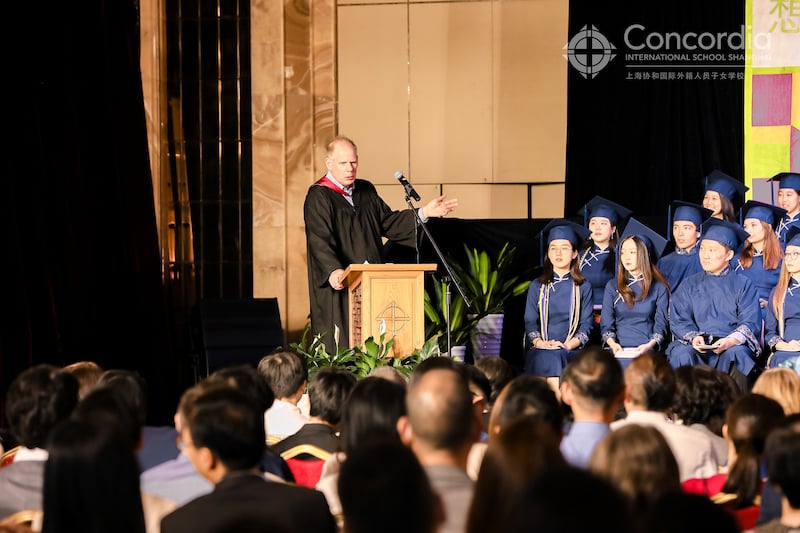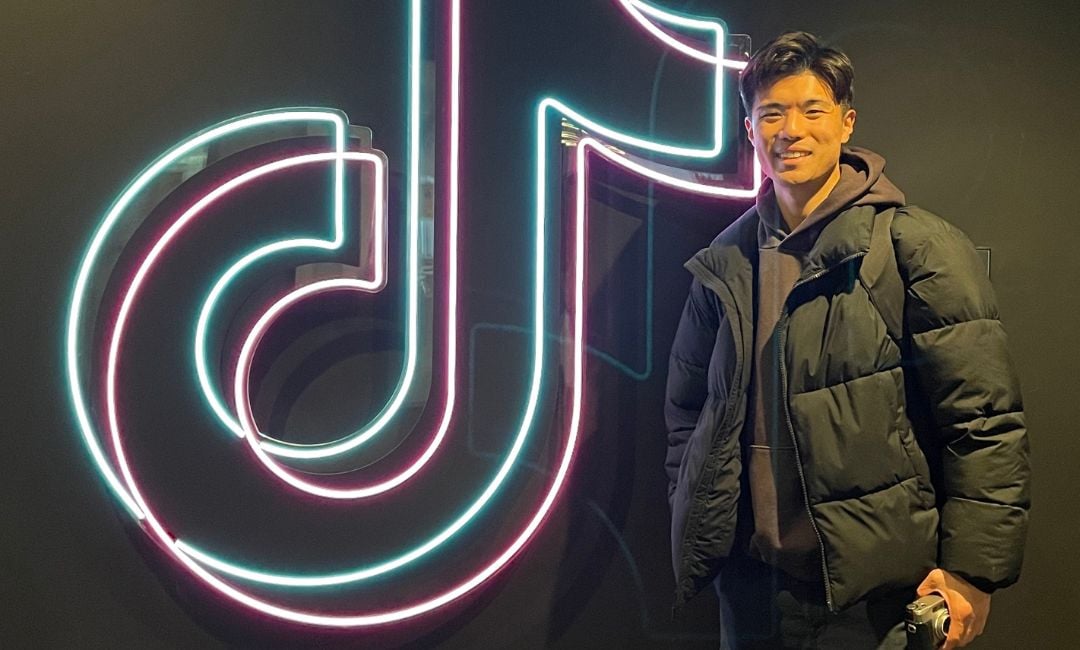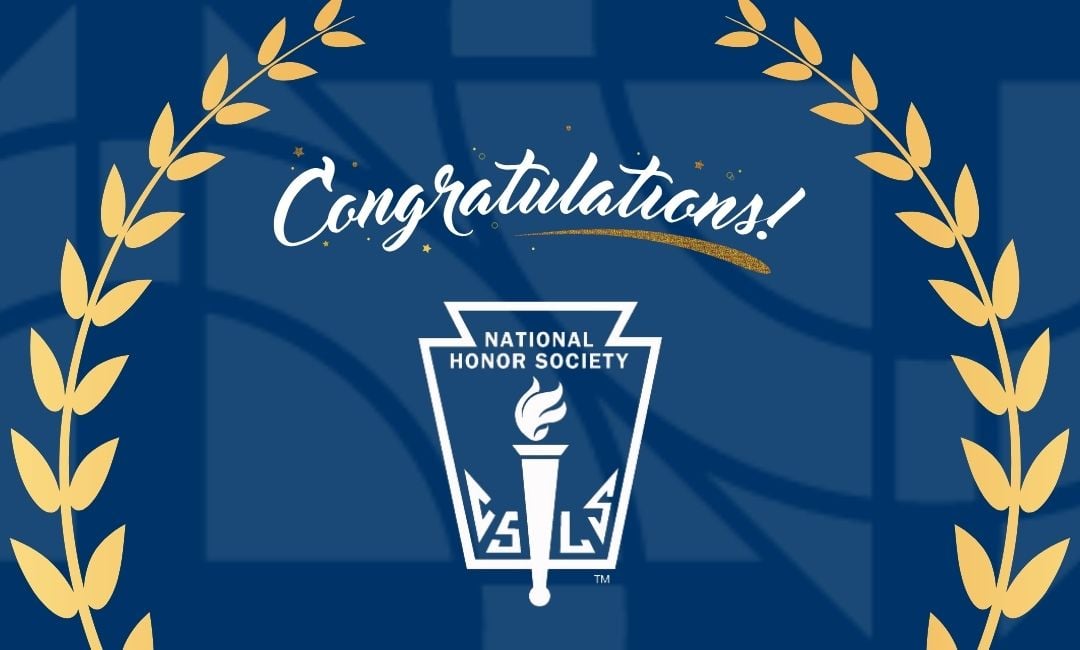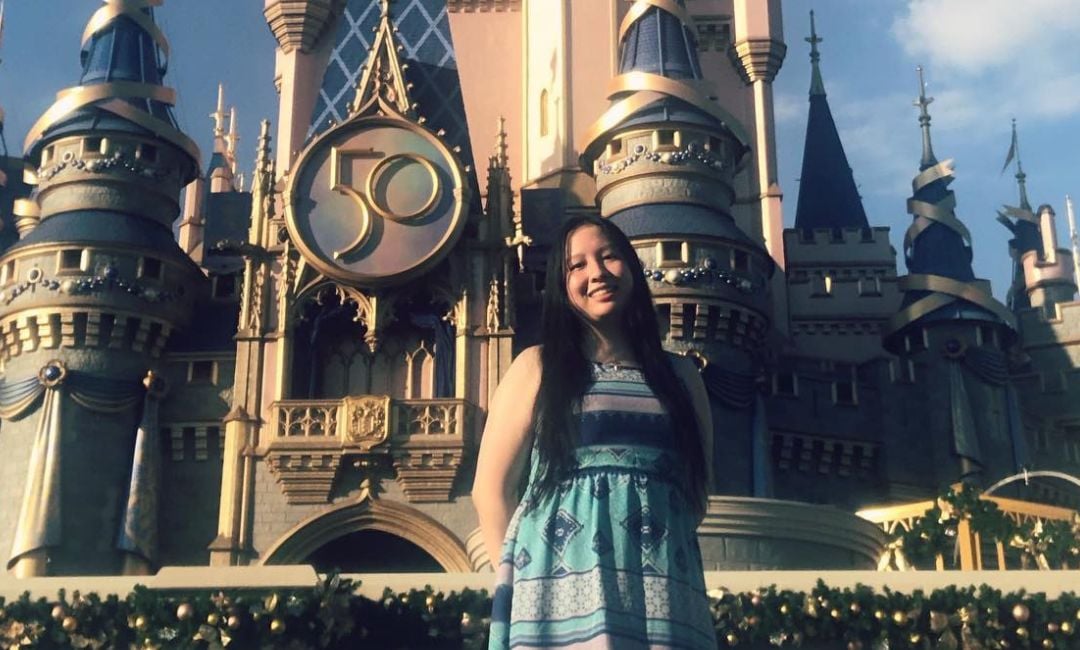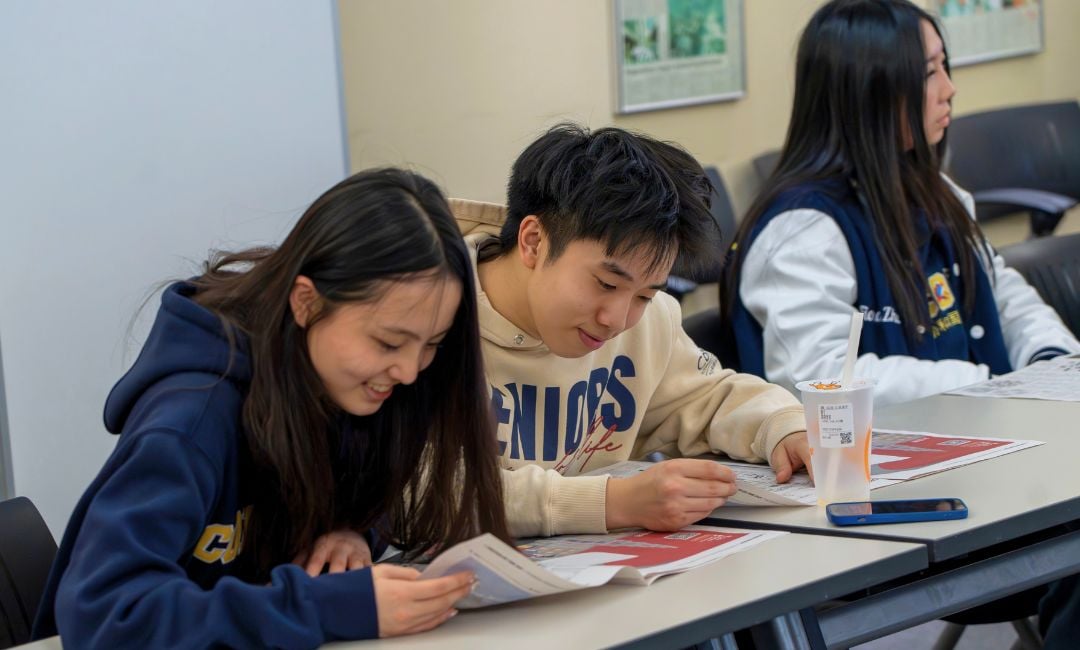The commencement address at this year's graduation was delivered by Concordia Shanghai high school teacher Erik Paulson. Mr. Paulson was chosen by the senior class for this honor. Here is his speech in its entirety.
Concordia Shanghai Class of 2021 Commencement Address by Mr. Erik Paulson
Good morning. Up until an hour ago, I had nothing but confidence regarding the Class of 2021. Now I’m not so sure…An hour ago I was walking through the lobby just outside this room, and three or four of our graduates were seating on the sofa, quietly minding their own business. As I walked by, I leaned over and said “Hey, guys. Don’t sit there.” AND THEY ALL STOOD UP! It’s a couch. In a lobby. Do I look like the hotel manager?? But when I asked why they stood up so quickly, they said “Cuz you told us to.” Guys, I need you to do better. Don’t be sheep. We simply cannot afford for your generation to be blindly, reflexively caving to the whims of arbitrary authority. The next time someone tells you to do something that doesn’t make a shred of sense, raise a reasonable objection. At the very least, ask them WHY…
Anyway, I spent the last few weeks soliciting advice on what to talk about this morning, and lots of folks have weighed in. Amy Lin wants me to “set the bar low.” I can totally do that. Amy, I promise to screw this up so completely that, after this, anything you say is going to make you sound like Abe Lincoln giving the Gettysburg Address. Someone else said, “whatever your topic, just make sure you fact-check everything. Because otherwise Alan Deutsch is going to raise his hand in the middle of it and point out all your mistakes. Alan, keep your hands where I CAN’T see them. And then Ms. Mahoney sent me an email and said “you should totally punk Amy Lin by stealing her speech. Here’s the first two paragraphs…she actually sent them to me. I think she was joking, or maybe those were like the teaser paragraphs, and if I wanted the rest of the speech I was going to have to pay her for it. Amy, the next time you have to give a speech, you might want to think twice about who you show the rough draft.
So lots of good advice, but I still wasn’t sure, so I went wandering in search of inspiration. I walked through every classroom, every hallway, every common space on the Concordia campus; every room that my keycard would open. I learned a couple things.
First, I learned that an elementary teacher should be paid 10 times the salary of a high school teacher of Economics. Seriously, to walk through elementary classrooms is to be confronted with your own inadequacies, and to be reminded of the truth of the book title “Everything I Need to Know I Learned in Kindergarten.” While I was talking about the elasticity of the labor supply curve, they were teaching you to read, write and cipher. AND to be kind, to say please and thank you, not to run with a scissors and so much else. In other words, things that actually matter. You should be profoundly grateful to your elementary teachers, and I encourage you to seek them out and let them know how much you appreciate their efforts. On that note, here’s something interesting. Although you are far enough removed from elementary school that few of your teachers are still at Concordia, full a third of Jen Muir’s fourth grade class is seated on the stage tonight. Rinka, Katherine, Liam, Stephanie, Alan and Hannah. When this is over, go find Mrs. Muir and thank her. And take a photo.
The other thing you realize when you explore every space on the Concordia campus is that there’s a lot to look at. Practically every square meter of wall space at Concordia has something attached to it. Especially in the classrooms. Some of it is fairly prosaic-reminders by the doors to turn off the lights, evacuation plans for the next time Mr. Potter sets the high school on fire, that kind of thing. Some of it is subject-specific: the Geography room has a map of the world, the Chemistry room has that weird thing with all the letters on it…I think it’s an eye chart, or something…But most of what you find in the classrooms, hallways and common spaces is an attempt on our part to surround you with love and inspiration, to remind you to be grateful, humble and compassionate, and to call you to action on behalf of people less fortunate than yourselves.
When you take it all in at once, the Wisdom of the Walls is a window on our values, a distillation of what we truly wanted you to teach you. I know I was inspired. But there was also a part of me that wondered, do the students even notice all this stuff? So after my own explorations, I went back to my classroom and removed a poster from the wall, and then at the end of a quiz the next day I pointed at the wall and said “OK. For one bonus point, tell me what used to occupy that blank space on the wall.” It had been there the whole year, it was facing you as you walked in the door…I mean, as extra-credit goes, you’d think was low-hanging fruit…Nobody had a clue. Not one person knew what it was.
Now I get it; you’re busy, there’s a lot going on, and I’m sure all your teachers are so endlessly fascinating that it’s hard to tear yourself away and take in your surroundings. Still, it was a little disheartening to find out that the net impact of all this decorative effort might be exactly zero. Seriously, there is SO MUCH there… So as a final public service before you graduate, I’d like to re-acquaint you with some of the inspirational artifacture of the Concordia campus. The greatest hits, as it were…
I love to learn about heroes, and nothing inspires me more than the stories of those who’ve made great sacrifices-sometimes even their own lives-in the service of humanity. If you ever spent any time in Mr. Sgourdos’s room, you may have seen-or, more likely, failed to notice-a poster on the wall telling the story of Raoul Wallenberg. It’s actually one of eight posters commemorating heroes of the holocaust, but Wallenberg is the one that always draws me in. He was a Swedish diplomat stationed in Budapest during the war, who issued passports and created safe houses that may have saved 100000 people. He was later imprisoned and then executed by the Soviets. If you’re anything like me, you can’t hear a story like Wallenberg’s without asking yourself: what would I have done? Would I have had the courage, the will, the ingenuity? Or would I have been immobilized by fear? What makes a hero? Some of it is genetic; heroes tend to score high on risk-taking personality traits and other genetic factors, but studies have also shown that modern-day heroes are more likely to know about heroes of the past, to have heard, read or watched their stories, and are more likely to imagine themselves acting heroically. Put yourself in Wallenberg’s shoes; we may need your heroism one day.
I am also inspired by the wonders of God’s creation, and one constant reminder of this was found on the third floor of the high school. Mr. Richmond has now packed up his classroom as he prepares for the move to Hanoi, but there used to be a poster-sized photograph on his wall; maybe the most extraordinary photograph ever taken. It was taken by the Hubble telescope, and is called the Ultra Deep Field. It’s a picture of a portion of the night sky, and it shows thousands and thousands of stars. At least you think it does…until you look more closely (or, in my case, you read the caption beneath the picture) and you realize that what you’re seeing aren’t individual stars at all. The Hubble telescope is so powerful, and can capture light that is so distant, that every point of light is a Galaxy, each with hundreds of millions of stars. Think about that, and you will feel very small, and very humble, and astonished at the majesty of creation. I can’t look into the Ultra Deep Field without seeing the hand of a creator, and it always makes me think of Psalm 19: The Heavens Proclaim the Glory of God…”
A more recent addition to the sea of inspiration, love, kindness and gratitude in which we’ve tried to immerse you is the collection of small, handmade signs that line the walls of many common spaces, each one offering words of encouragement or expressions of kindness and affirmation. You are loved. You got this. See the light in each other. And my personal favorite: Give 100% (unless you’re giving blood)! These signs are a wonderful testament to the kindness and the love that infuses our community, and a reminder of what’s truly important. I can’t resist quoting a few more:
"A small gesture goes a long way"
"Love your neighbor as yourself"
"Give cheerfully, accept gratefully"
And, finally, a monument to both kindness and bad grammar,
“Compassion is a verb…”
That last one was in the Middle School. I have no idea what they’re teaching down there…
All of this love, wisdom and encouragement wasn’t merely to make you feel good about yourselves, but to call you to action once you graduate. Several classrooms have on their walls the Universal Declaration of Human Rights, a reminder to each of us to defend those rights wherever they are imperiled. Several other places have posted the UN Sustainable Development Goals, a call to each of us to make those goals our own. But my favorite call to action is a little more subtle, and a little more specific. In the offices of our three high school counselors, there are three identical signs. They are very small, each with four simple words, written in all the colors of the rainbow: You are safe here…That message is directed towards our gay, lesbian, bisexual and transgendered students, but it isn’t just for them, and it isn’t merely a passive statement of our belief in equality. It is a call to action, for every single one of you, to reject those who discriminate, and to carry that ethos with you wherever you go next year and in the years to come. Discrimination, whether on the basis or race, gender, age, ethnicity, sexual orientation or any other God-given trait, has no place in the world. But whether it withers is entirely up to us.
One final thing. Earlier this spring your teachers got together to write a High School vision statement to guide our labors and clarify what we value. I love what it says. It says nothing about the arcana of AP Economics or Accelerated Chemistry, nothing about grades or test scores or colleges acceptances. Nothing about wealth or celebrity. It says we want you to be purposeful, to be passionate, to inspire change and act in the service of others. That’s it. That’s what’s important. We want you to be kind, humble and grateful for the blessings you’ve been given. We want you to accept responsibility for those less fortunate than yourselves, and to act in the service of others. And I know that sounds like a lot of work, and I know that we’re always telling your generation to fix all the problems that my generation created, but here’s the cool thing about that. There’s no either/or choice between a life of service and a life of personal satisfaction. Charity isn’t hardship; kindness isn’t a burden. Everything we know about the search for happiness suggests that the most reliable path to personal fulfillment isn’t fame, or money or power; no, the most reliable path to personal fulfillment is through devotion to something greater than oneself. I want you to think about what a glorious irony that is: that the most self-serving thing we can do is to behave selflessly. And that realization is a wonderful starting point for the grand adventure that awaits you all.
God bless each and every one of you. Thank you.
